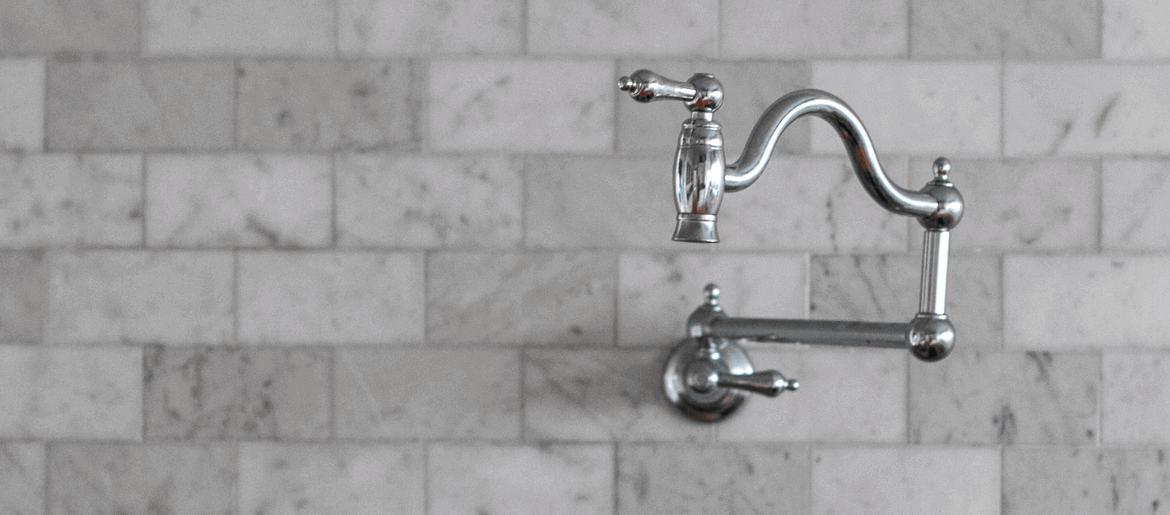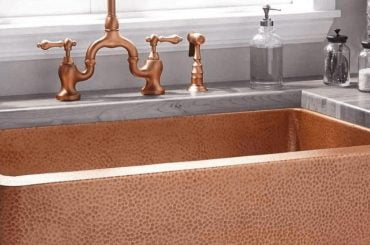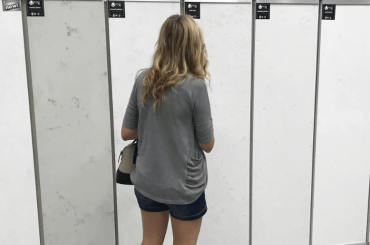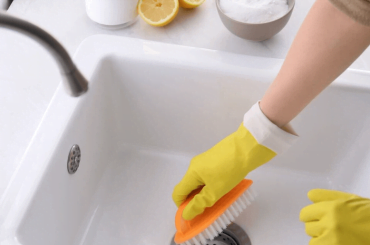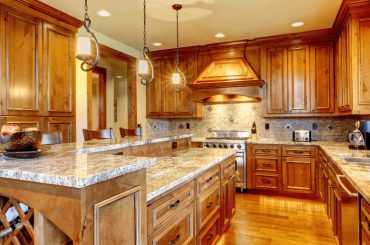A pot filler is a faucet fixture that is installed next to a cooking range. It allows pots and pans to be filled with water or other liquids quickly and easily. This can save time in the kitchen, as you won’t have to run back and forth between the sink and stove.
Pot fillers are also useful for filling large pots or containers such as those used for canning or making pasta.
If you’re looking for a convenient way to fill pots while cooking, a pot filler may be the right choice for your kitchen.
Pot Filler In Kitchen
A pot filler is a kitchen faucet that is designed to fill pots with water. It is usually installed near the stove so that you can easily fill pots without having to carry them to the sink.
Pot fillers make it easier to cook with large pots of water and they can also be used for filling pans with water for cooking. They are very handy if you do a lot of cooking with large pots of water and they can also be used to fill pans with water for cooking.
If you have a pot filler in your kitchen, you will no longer have to lug heavy pots of water to the sink. You can simply fill them up at the stove and then bring them over to the sink when you’re ready to use them. This can be a huge time saver especially if you do a lot of cooking.
Also, if you have a lot of pans that you need to fill with water, a pot filler can be a big help. You can fill all of your pans and then just put them on the stove to cook. This can save you a lot of time and effort and it can also help you to avoid making a mess.
Pros and cons of Pot filler in the kitchen
There are many pros and cons to having a pot filler in your kitchen. Some people love the convenience of having one, while others find them to be an unnecessary addition.
Here are some of the pros and cons of owning a pot filler:
PROS:
- Saves time when cooking by eliminating the need to walk back and forth between the sink and the stove
- It can be used to fill pots of different sizes
- Some models come with a built-in shut-off valve, which can help prevent spills
- Some pot fillers are equipped with a filtered water option, which can be a great way to get fresh, clean water for cooking
- They can be a nice aesthetic addition to your kitchen
CONS:
- Pot fillers can be expensive and not all models are created equal
- They require plumbing installation, which can be costly and time-consuming
- Some people find them to be unnecessary and prefer to use a regular kitchen faucet
- If not used properly, pot fillers can cause water damage to your countertops or floors
- They can be difficult to clean and maintain
Whether or not a pot filler is a good addition to your kitchen depends on your personal preferences and needs. weigh the pros and cons carefully to decide if a pot filler is right for you.
How to choose the right pot filler for your kitchen?
There are a few things to consider when choosing a pot filler for your kitchen.
1) Select Spot for Installation
First, you’ll need to decide where you want to install it. Most pot fillers are installed near the stove, but you can also install them near the sink or in another convenient location.
2) Consider your Budget
Next, you’ll need to choose a model that fits your budget. Pot fillers can range from a few hundred dollars to a few thousand. so it’s important to find one that fits your needs and budget.
Generally, the more features a pot filler has, the more expensive it will be. The price between brands can also vary greatly, so be sure to do your research before making a purchase.
3) Features
Finally, you’ll need to decide what features you want in a pot filler. The majority of the models available on the market today are equipped with built-in shut-off valves and filtered water choices, yet others are more basic. Consider what features would be most useful to you and choose a model that has them.
However, it’s important to choose the right model for your needs and budget. Carefully consider the pros and cons of owning a pot filler and use this guide to help you choose the right one for your kitchen.
When it comes to kitchen appliances, there are a few that are essential and others that are nice to have. A pot filler is one of those appliances that fall into the latter category.
Did You Know: Are Pot Fillers Worth It?
How to install a pot filler in your kitchen?
Once you’ve selected the perfect pot filler for your kitchen, it’s time to install it. Installation can be a bit tricky, so it’s important to follow the instructions carefully:
- Start by turning off the water in the area where you’ll be installing the pot filler. This will help to prevent any accidental flooding.
- Next, use a drill to create two pilot holes in the wall behind where the pot filler will be installed. These holes should be about an inch apart.
- Insert the wall anchors into the pilot holes and then use a screwdriver to tighten them in place.
- Next, align the bracket on the pot filler with the anchors and then use screws to secure it in place.
- Finally, turn the water back on and test out your new pot filler!
Tips for using a Pot Filler Safely and Efficiently
Now that you’ve installed your new pot filler, it’s time to start using it. Here are a few tips to help you get the most out of this handy kitchen appliance:
- Be careful when using the pot filler for the first time. The water pressure can be strong, so go slowly at first to avoid making a mess.
- If you’re filling a large pot, it’s best to turn off the water before moving the pot to avoid spilling.
- When you’re finished using the pot filler, be sure to turn off the water at the valve to save water.
- Cleaning your pot filler regularly will help to prevent mineral buildup and keep it in good working condition.
- With a little bit of care, your pot filler will provide years of trouble-free use.
FAQs | Pot Filler
How much does it cost to install a pot filler?
The cost of installing a pot filler will vary depending on the model you choose and the complexity of the installation. Generally, you can expect to spend between $200 and $500 on the installation itself.
However, if you’re hiring a professional to do the job the cost could be even higher.
Are pot fillers prone to leak?
Pot fillers are not prone to leak if they are installed properly and maintained regularly. However, if the pot filler is not correctly maintained it could develop a leak. Regular cleaning and inspection of the pot filler will help to prevent leaks from happening.
Are pot fillers only cold water?
Most pot fillers are only cold water, but there are a few models that offer both hot and cold water. These types of pot fillers are more expensive but they offer the convenience of being able to fill a pot with either hot or cold water.
What is a good brand for a pot filler?
There are a few good brands of pot fillers on the market but it’s important to choose one that’s right for your needs and budget. Some of the more popular brands include Delta, Kohler and Moen.
Does a pot filler need a valve?
A pot filler does not need a valve if you already have one installed in your kitchen. However, if you don’t have a valve, you’ll need to install one to use the pot filler. Installing a valve is not difficult but it’s something that should be done by a professional.
Wrap Up
A pot filler is a kitchen faucet installed near the stove that allows you to fill pots with water without having to carry them across the room. They are a popular choice for many homeowners because of their convenience and versatility and they can be a great addition to any kitchen.
If you’re considering adding one to your home, we’ve got all the information you need to make an informed decision. Read on to learn more about what pot fillers are, how they work and some of the pros and cons of owning one.

